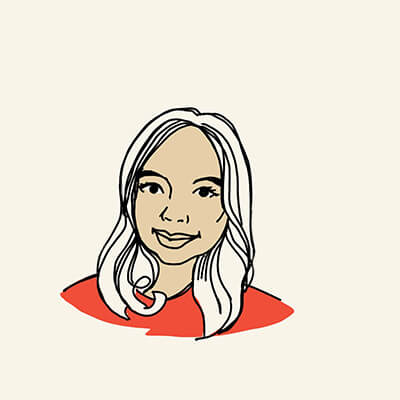- To access Grants or Bonds from the government, beneficiaries should wait ten years after the last Grant and Bond is received. If a withdrawal is made before the ten year wait period is over, part or all of Grants and Bonds received within the last ten years of the withdrawal will have to be paid back. Some exceptions apply to beneficiaries with shortened life expectancies.
- Withdrawals that would reduce the RDSP balance below the total amount of grants and bonds received in the past 10 years may be denied.
- Annual withdrawals must begin by the end of the calendar year when beneficiary reaches 60 years of age.
- Contributions (except contributions from an RRSP/RRIF or RESP rollover) are non-taxable but bonds, grants and investment income are considered taxable income for the beneficiary when withdrawn.
- RDSPs don’t affect other government tax and disability benefits for B.C. beneficiaries.

What is an RDSP?
The Registered Disability Savings Plan (RDSP) is a long-term, tax-deferred savings and investment option for Canadians with disabilities.
Tax-deferred growth
Contributions to an RDSP are tax-deferred. Meaning investment income earned with the money isn’t taxable until withdrawn.
Government assistance
Eligible Canadians can receive up to $90,000 over a lifetime in Canada Disability Savings Grants and Bonds, plus Endowment 150. Use term deposits to save cash that you don’t need to use now, but are likely to use within the next 5 years.
No annual maximum
Make contributions to the plan at your pace with no annual limit. There is a $200,000 lifetime contribution limit. Contributions can be made until Dec. 31 of the year when the beneficiary turns 59.
RDSP grants & bonds.
Up to 300%
Canada Disability Savings Grant (CDSG)
Access government matching grants of up to 300%, depending on the beneficiary’s family income and contribution. The maximum CDSG is $3,500 per year (if not catching up past years entitlement) with a lifetime limit of $70,000.
Up to $1,000
Canada Disability Savings Bond
Receive up to $1,000 per year, if not catching up past years entitlement, if the beneficiary’s family income is under certain thresholds.
$150 grant
Endowment 150
A one-time $150 grant to help children and low-income adults living in BC to grow their RDSPs.
How an RDSP works.
We’ve partnered with Ability Tax and Trust advisors and Equal Futures to offer free and easy service for helping you open an RDSP. An RDSP plan holder can be a parent or legal guardian, or a beneficiary who is over 18 and contractually competent to enter the plan.
Qualifying and opening an RDSP
Get started by visiting Equal Futures or calling 1-855-773-7377 to receive:
- Eligibility assessment for the RDSP
- RDSP qualification filings
- Tax credit and benefits review
- RDSP account opening support
RDSP eligibility
- Eligible for the disability tax credit (DTC)
- Have a valid social insurance number (SIN)
- A resident in Canada when the plan is entered into and
- Under 60 yrs old (if you’re 59, you must apply before Dec. 31)
Already have a Disability Tax Credit Certificate? Book an appointment to set up your RDSP.
Grants and contributions
Once your RDSP account is open, we can help you apply for the Canada Disability Savings Grants and Bonds. Print and fill out the application on the government website, then book an appointment with us.
Anyone can contribute to the RDSP with written permission from the plan holder.
Grow your investments
Funds in the RDSP can be invested in mutual funds*, term deposits/GICs or in a Jumpstart® High Interest Savings account. Our investment professionals can help you build an investment portfolio that works to achieve your financial goals.
Withdrawing RDSP
The RDSP was made to encourage long-term savings so there are rules around withdrawing early. You must wait at least 10 years after you received your last bond or grant before you can withdraw freely. Otherwise, you may have to return some of the money from the government.
By the end of the calendar year that you turn 60, you must start withdrawing from your RDSP at least annually. Because this will be 10 years after your last possible bond or grant, withdrawals starting at age 60 won’t cause repayments of bonds or grants.
Your advisor can create a plan for withdrawing, before or after 60, with all of this in consideration.
Invest your way.
With a professional
Thinking about the future can be tough. Thankfully, our experts do it everyday. Let us handle your investment planning.
Book an appointmentSelf-directed
Manage your investments online with Qtrade Direct Investing® or contribute anytime to Qtrade Guided Portfolios®, a fully-automated investing platform.
Learn about online investingAsk the pros.
Our pros with some advice on RDSPs.
What else do I need to know about withdrawing from my RDSP?
Does an RDSP affect my other disability benefits?
RDSP assets and payments in British Columbia are exempt when determining eligibility for provincial disability benefits. Also, having an RDSP has no impact on many federal benefits such as the Canada Child Benefit, the Canada Workers Benefit, the Goods and Services Tax Credit, Harmonized Sales Tax Credit, Old Age Security (OAS) or Employment Insurance (EI).
Can I deduct RDSP contributions on my income tax?
Contributions are not tax-deductible but are not taxed when withdrawn.
Is a contribution required in order to receive government benefits?
Eligible members can receive up to $1,000 annually through the Canada Disability Savings Bond without making a contribution. If you make a contribution then you may be eligible to receive a matching grant of up to 300% through the Canada Disability Savings Grant.
Can I receive annual payments from my RDSP?
Yes, annual payments or Lifetime Disability Assistance Payments (LDAPs), must begin by the end of the year in which the beneficiary turns 60. These annual payments are based on the beneficiary’s age and the fair market value of the plan at the beginning of the year and will continue for the life of the beneficiary or until the funds are depleted and the plan is terminated.
Are RDSPs protected from creditors?
Yes, like RRSPs/RRIFs, RDSPs are protected from creditors, except contributions made in the 12 months before the date of bankruptcy.



View legal details
Qtrade Guided Portfolios is a division of Aviso Financial Inc.
* Mutual funds and other securities are offered through Aviso Wealth, a division of Aviso Financial Inc. Commissions, trailing commissions, management fees and expenses all may be associated with mutual fund investments. Please read the prospectus before investing. Unless otherwise stated, mutual funds, other securities and cash balances are not covered by the Canada Deposit Insurance Corporation or by any other government deposit insurer that insures deposits in credit unions. Mutual funds and other securities are not guaranteed, their values change frequently and past performance may not be repeated. Pooled Portfolios are distributed by Aviso Wealth. Referral fees, commissions, management fees, and expenses all may be associated with managed accounts or the investments therein. Managed accounts, and the investments therein, are not insured nor guaranteed, their values change frequently and past performance may not be repeated.
ᶲ Online brokerage services are offered through Qtrade Direct Investing, a division of Aviso Financial Inc.